(单词翻译:单击)
Lois Conner calls herself a collector of landscapes. The fascination started in childhood, when she was mesmerized by the panoramas she glimpsed on family road trips. But it turned into an artistic mission over the last three decades as she traveled through China with her view camera in search of images layered with detail and history.
洛伊丝·康纳(Lois Conner)自称是风景收藏者。这种迷恋始于童年,一家人驾车旅游的时候,沿路瞥见的景色让她陶醉不已。在过去30年里,这种迷恋变成了艺术项目:她带着自己的大画幅相机,在中国走南闯北,寻找承载着历史与细节的影像。
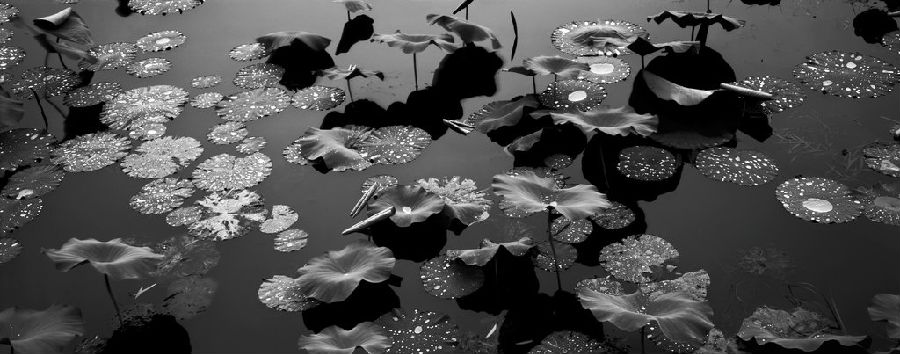
And to think, her life's work started almost by accident.
想想看,她的终生事业几乎始于意外。
She was a graduate student in photography at Yale, from 1979 to 1981, when she had to take several electives outside of her medium. She chose a course on Ming dynasty landscape painting, where she was struck by the "Dr. Seuss-like" scenes of the Li River, in what is now Guilin.
1979年到1981年间,康纳在耶鲁读研究生,学习摄影,但必须选修几门自己艺术手法之外的课程。她选择了明朝山水画,课上被漓江“苏斯博士式的”景色打动。这条江位于今天的桂林地区。
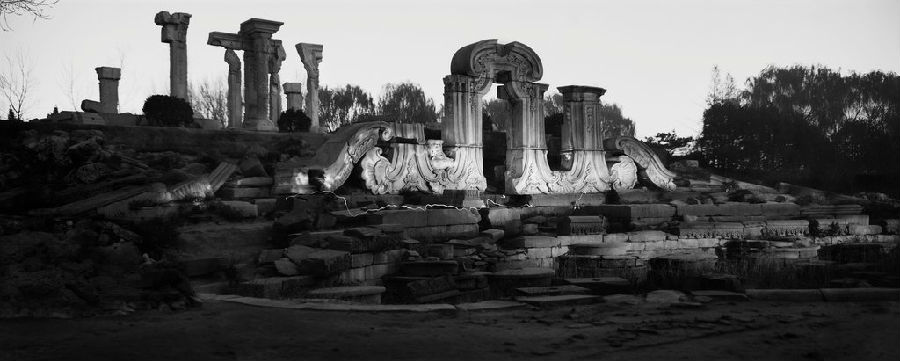
"I asked my professor, why did they make up that kind of landscape?" she recalled. "And he said, 'That place really exists.' "
“我问课上的教授,他们为什么要想象出那种风景?”她回忆道。“结果他说,'这地方真的存在。”
That's when she knew she had to go to China. A 1984 Guggenheim Fellowship got her there. Her insatiable curiosity has kept her returning ever since. Her new book and solo exhibition, "Beijing: Contemporary and Imperial," on view at the Cleveland Museum through June 29, offers up cinematic scenes of tangled trees and imperial gardens juxtaposed against stark, modern architecture.
就在那个时刻,她知道自己必须去中国。1984年的古根海姆奖学金(Guggenheim Fellowship)让她得偿所愿。打那以后,无穷的好奇心让她一次又一次地重返中国。在她的新书《北京:当代与帝国》(Beijing: Contemporary and Imperial)及同名展览中,呈现了种种电影般的场景:藤蔓交缠的树木、皇家的园林,却混搭着冷峻的现代建筑。展览将在克利夫兰美术馆(Cleveland Museum)举办,至6月29日闭幕。

"In a way it's unknowable," Ms. Conner said. "I started on something and I just feel like it's never going to be finished."Serendipity played a role in her becoming a photographer. Raised in southern Pennsylvania, Ms. Conner knew from an early age she wanted to be an artist. In her teens, she apprenticed herself to a painter who lived next door. She set off for New York intent on studying fashion design. She took a job as a secretary at the United Nations to pay the rent. She took courses in tap dancing, art and photography out of curiosity. Philippe Halsman, her photography teacher at the New School, asked her why she was studying fashion.
“某种程度上,这是不可知的,”康纳说,“我开始做某件事情,然后感觉永远不会结束。”在她成为摄影师的过程中,缘分起到了不小的作用。在宾夕法尼亚州长大的康纳从小就明确自己想成为艺术家。十几岁的时候,她在画家邻居那里当学徒。后来,她来到纽约,准备学习时装设计,还在联合国找了份秘书的工作来付房租。出于好奇,她学习了踢踏舞、艺术及摄影。新学院大学(The New School)的摄影老师菲利普·哈尔斯曼(Philippe Halsman)问她,为何要念时尚?
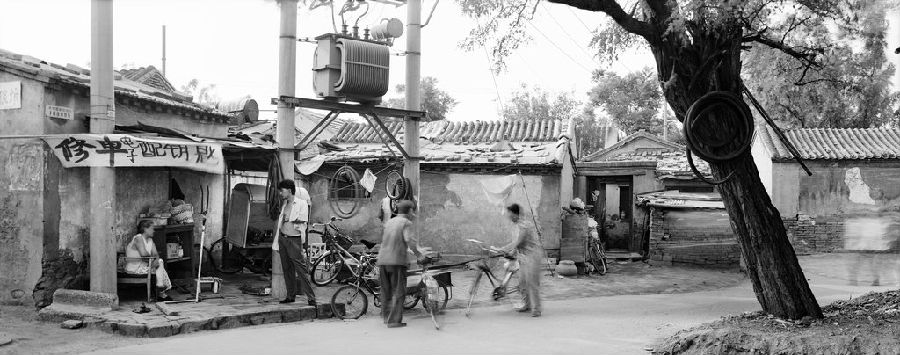
"I could not answer the question," she said.
“我答不上来,”她说。
That was enough to have her transfer to Pratt Institute to study photography. It was there she first encountered a view camera.
这就足以让她转到普瑞特艺术学院(Pratt Institute)学习摄影。在那里,她首次接触到大画幅相机。
"There was something about having the camera on the tripod that allowed me to pause," she said. "It just made sense to me. My sensibilities are more contemplative."
“相机放在三脚架上,让我能停下来,感觉挺特别,”她说,“这的确很适合我。我的情绪更倾向于思考。”
She needed that quiet time, given her schedule. By day she was at school in Brooklyn. Evenings she worked at the United Nations. Lunch was at midnight. At least when she started traveling for the United Nations she was able to afford a proper lens and tripod.
由于日程繁忙,康纳很需要这种静下来的时间。白天,她去布鲁克林上学,晚上则在联合国工作,午餐得等到午夜。至少,当她开始为联合国的工作出差的时候,能买得起不错的镜头和三脚架了。
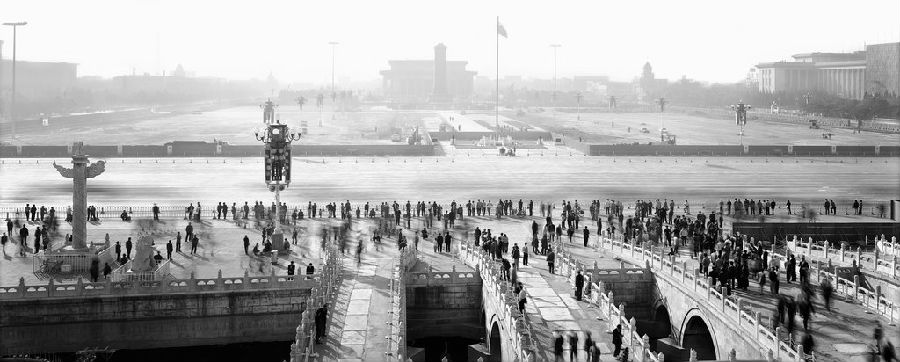
"Traveling suited me," she said. "When on the road I would try to think of what other road had looked this way, or how suddenly the landscape in front of me looked like China or other places I'd never been."
“我喜欢旅行,”她说,“在路上的时候,我会努力回想别的什么路曾经看起来一模一样,或是想象眼前的风景突然就像是中国之类我没去过的地方。”
In 1984, she left the United Nations to become a full-time photographer.Her encounter with Chinese landscape painting prompted her to think in panoramas, which she eventually made with a 7×17 banquet camera. The camera was originally used in the late 19th century for photographing large gatherings, and its format and huge negatives ensured that throngs of sharply dressed guests would remain in equally sharp focus.
1984年,康纳离开联合国,成为全职摄影师。对中国山水画的接触让她拥有了全景的思维方式,促使她最终用一台7×17英寸的宴会相机来拍全景照。这种相机原本在19世纪末用于拍摄大型聚会,其规格及巨大的底片能够保证,一大群衣着光鲜的宾客会被拍得个个都很清晰。

During her three decades in China, she noticed many changes, like cities emerging seemingly out of nowhere.
在探访中国的30年间,她注意到诸多变迁,比如有些城市似乎一夜之间拔地而起。
"Interior of the Bank of China During Construction" shows one of the first of the new architectural landmarks in Beijing, with its 130-foot, winglike interior obscured by a waffle of scaffolding in a tight frame, blotting the sky. Conversely, "Solitary Arch, Changchun Yuan, Yuanming Yuan," shows the skeleton of a snow-topped vault flanked by thin tilted trees, an entrance into a world both magical and removed. The wall was once apart of a Western palace designed by Jesuit missionaries in the mid-18th century for the Qianlong emperor and served as both a de facto center for the Chinese Empire and a site for Chinese culture.
《中国银行建造期间内景》(Interior of the Bank of China During Construction)展现了北京首批新建筑地标中的一座。130英尺(约合40米)的翼状内部结构紧紧包裹在格状脚手架中,遮蔽了天空。与之相反,《圆明园长春园孤寂的拱门》(Solitary Arch, Changchun Yuan, Yuanming Yuan)则表现的是积雪覆盖的一座残缺拱门,两侧栽着纤弱的歪树,好像是通往神奇而遥远世界的入口。这些断壁残垣曾经属于18世纪中叶耶稣会士为乾隆皇帝设计的一座西式宫殿,当年曾是帝国实际上的中心,也是中华文化遗址。
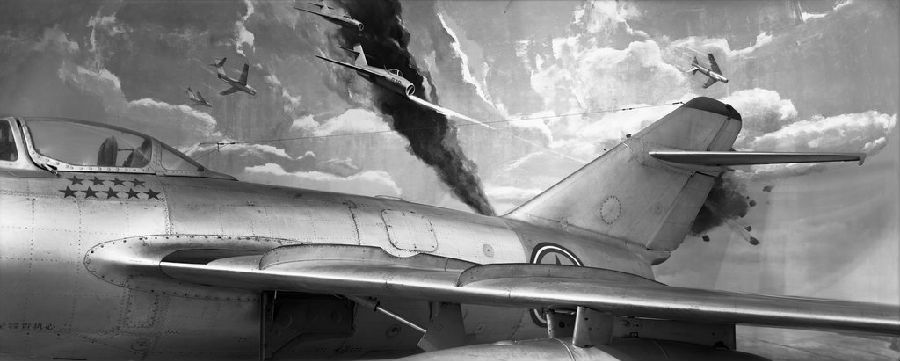
Once part of a trio of its kind known as the Garden of Perfect Brightness, the wall was destroyed in 1860 by the British and the French. All that remains is this national ruin, a reminder of these European wounds.
圆明三园在1860年毁于英法联军之手,剩下的只有这片作为国家纪念场所的废墟,提醒着人们欧洲带来的创伤。
But the photograph is doubly significant. It was a turning point in Ms. Conner's project, when she started her longtime collaboration with Geremie Barmé, a leading expert on Chinese culture and history. It also sparked her obsession with the lotus flower, which has appeared in her work ever since.
不过,这批照片具备双重意义。这是康纳进行的项目的转折点。当时,她刚开始与中国文化与历史方面的著名专家白杰明(Geremie Barmé)进行长期合作。这还引发了她对荷花的痴迷。从此以后,荷花成为她作品中的恒久主题。

"It was raining and it was summer," Ms. Conner said. "I got soaking wet. I just wanted to go home and take a shower. But, all of the sudden, I noticed these lotuses and water droplets sparkling on top of them."Between her trips to China, Ms. Conner was busy teaching. She spent 10 years at Yale as both director of undergraduate photography and a professor in the graduate school.
“那时下着雨,是夏天,”康纳说,“我全身湿透了。只想回家冲个澡。可是,突然之间,我注意到了荷花和它们上面亮晶晶的水珠。”在中国之行的间隙,康纳忙于教学。她在耶鲁待了10年,同时担任摄影本科专业的主管和研究生院的教授。
If she is not in China or teaching, Ms. Conner is processing her film or platinum printing in her apartment. The process is meticulous, but she wants her work to be believable, no matter how long it takes.
如果既不在中国,又没有教书,康纳就是在自家公寓冲洗胶片或是制作铂金印相。冲洗过程一丝不苟,因为她希望自己的作品真实可信,不管要花多长时间。
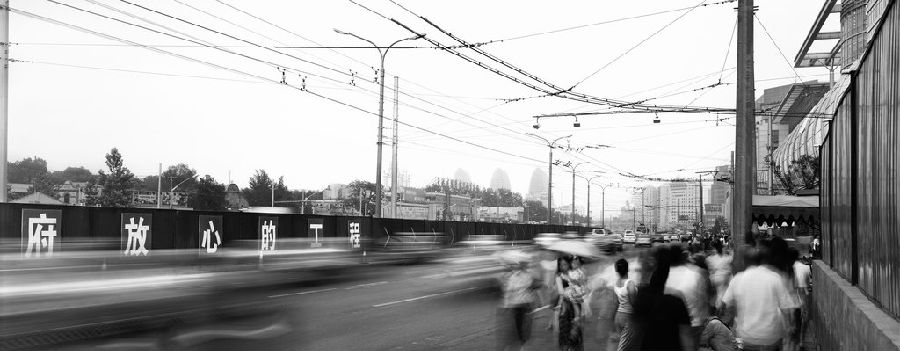
"The most important thing is not an artistic career or big pile of money, but to have that group of prints or the body of work that matters," she said.
“最重要的事情不是什么艺术生涯或大把钞票,而是拍出的照片集或者说是一生的作品能有意义,”她说。
"Atget is the perfect example," she said, referring to the French photographer Eugène Atget. "He put all the money into his work, but look what he has given us, it's profound and encyclopedic, a life's work. That's what I aspire to at the end of my life, to have that body of work. Not fame, not fortune, not recognition. I have enough right now."
“阿杰特就是完美的例子,”她说。这里谈到的是法国摄影师尤金·阿杰特(Eugène Atget)。“他把所有的钱都花到了工作上,看看他给我们留下了什么,深邃广博,一辈子的作品。我渴望生命终结的时候也能够做到,拿得出这样的作品。不是名声,不是财富,也不是认同感。这些东西我现在拥有的就足够了。”
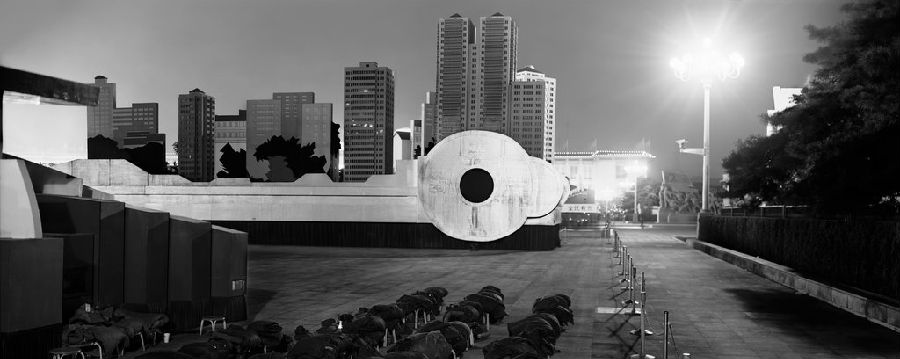
What she cannot get enough of, however, is something that is endlessly enchanting. The lotus.
不过,让她总觉得不够的是种拥有恒久吸引力的东西:荷花。
In one triptych, the flowers are scattered randomly, and yet there is a sense of order. If you stare long enough, you will discover whole worlds, villages, people, faces, eyes. Shadows become reflections; light sparkles like dabs of paint.
在一组三联拍作品中,荷花随意散布,却又带有某种秩序感。如果长时间盯着看,可以发现整个世界,村庄、人、面部和眼睛。阴影变成了映射;光亮像零星的颜料般闪耀。
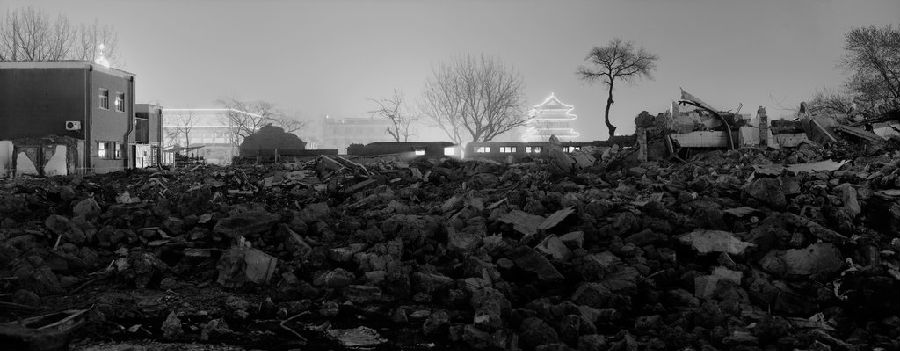
"Looking at my lotuses, I want to cry and photograph them until I don't have any film," Ms. Conner said. "And then when I don't have any film, I just want to sit there. It's like being in love. I don't want it to stop. There are so many possibilities. My life isn't long enough."
“看着我的荷花,我想哭,想拍到没有胶片为止,”康纳说,“等到真没了胶片,我只想坐在那里。跟坠入爱河似的,我不想结束。可以做的事情太多了,我的生命却不够长。”


